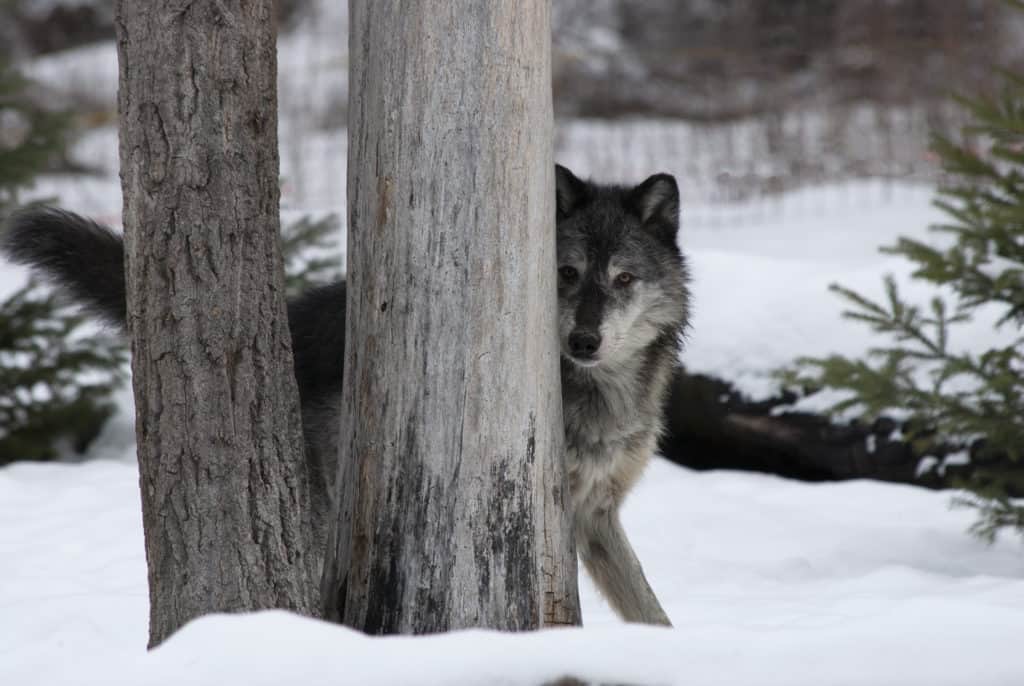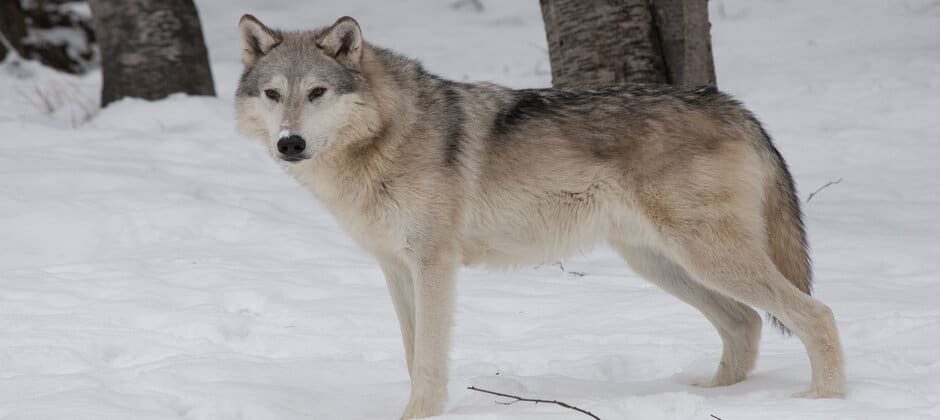Share this article
Wolf expansion in Wyoming curtails puma population
It was February 1999, and a pack of five wolves had just made their way into the National Elk Refuge in northwest Wyoming. The new pack, which had moved south from Yellowstone and Grand Teton national parks, drew thousands of tourists as the animals spent much of their time out in the open in a valley on the refuge.
“It caused total mayhem as people started flooding in to see wolves,” said Mark Elbroch, Puma Program Director for Panthera, the global wild cat conservation organization.
It didn’t take long for the wolf watchers to spot another predator on the landscape — a female cougar with kittens that remained visible on the same landscape for roughly 40 days.
“It was only because of wolf watchers that that cat was seen in the first place,” Elbroch said.
The visibility of mountain lions (Puma concolor) and wolves (Canis lupus) drew around 45,000 tourists over just a few weeks, Elbroch estimated. But this apparent snapshot of primordial bliss wasn’t destined to end with tolerance and camaraderie between the two large predators. In fact, new research Elbroch and his co-authors published in Proceedings of the Royal Society B shows that as wolves continued to naturally expand into the National Elk Refuge and surrounding areas, they soon began to outcompete — and in some cases directly prey on — mountain lions in the area. The effect was so strong that he estimates just 20 wolves had the same impact on the population of big cats in one year as the total human impact for a year.
“We had no expectation that wolves were going to drive mountain lions to the ground,” Elbroch said.
Elbroch and his colleagues began a large project to track the big cats over 2,300 square kilometers in northwest Wyoming around Jackson just after wolves moved into the area. From 2000 until 2017, they monitored 147 cougars, analyzing cause of death, reproduction and movement, among other factors.
For this study, they also drew on data from other sources tracking elk (Cervus canadensis) and wolf populations in the area, as well as how many cougars were taken by human hunters. The elk data was particularly important as both cougars and wolves prey on the ungulates.
“Elk is one of the currencies and one of the most important variables in that system,” Elbroch said.
Wolves are known to push cougars out of prime habitats. In some cases, they even prey on kittens, though cougars also sometimes return the favor by preying on wolves and pups. But researchers weren’t sure whether these impacts were enough to push cougars out of areas.
Their data, which includes trail camera footage as well as tracking data from collars, showed that mountain lion populations dropped 48% over the course of the 17-year period. They managed to tease apart the impact of human hunting versus that of wolves in this period and found that wolves had more than a 400% impact on the abundance of cougars than human hunting in the area over their study period.

Wolves are outcompeting cougars in parts of northwestern Wyoming.
Credit: Mark Elbroch, Panthera
They also found that wolves could be pushing the elk away from forests and more rugged areas — where cougars are found more often — into more open areas. Out in the open, the elk are easier prey for the wolves, and the availability of prey for cougars is decreased.
“There’s a double hit on the elk that was occurring,” Elbroch said, adding that wolves had a bigger impact on elk than humans in the area. “Wolves are the greatest impact on the abundance of elk.”
Insert: https://www.youtube.com/watch?v=Pz3hrRLibTQ&feature=youtu.be
Caption: Mark Elbroch investigates the traces of a conflict between cougars and wolves. Credit: Panthera
In turn, the impact of wolves decreased the amount of elk available to the cats by more than 70%. “We saw a huge increase in starvation in mountain lions of different age classes,” Elbroch said.
Some of these findings stand in stark contrast to other recent studies regarding puma, wolves and elk in western central Montana, which showed that puma have the largest impact on elk. But Elbroch said the environment types in those areas are much different from those in northwestern Wyoming, and there are four to five times more cats in that part of Montana. He said in that area, it may not be the most ethical path for wildlife managers to focus on increasing cougar harvest to bolster elk populations.
In northwestern Wyoming, Elbroch said that one of the most interesting things to see is the revelation of how the ecosystem may have looked several hundred years ago before wolves were eliminated. Cougars clearly rearrange their use of the landscape when wolves are present. “They’re not going to be wiped out, but they are going to change the way they’re living.”
Photo 1: A wolf in Grand Teton National Park. Credit: Mark Elbroch, Panthera
Photo 2: Wolves are outcompeting cougars in parts of northwestern Wyoming. Credit: Mark Elbroch, Panthera
Header Image: A wolf in Grand Teton National Park. Credit: Mark Elbroch, Panthera








